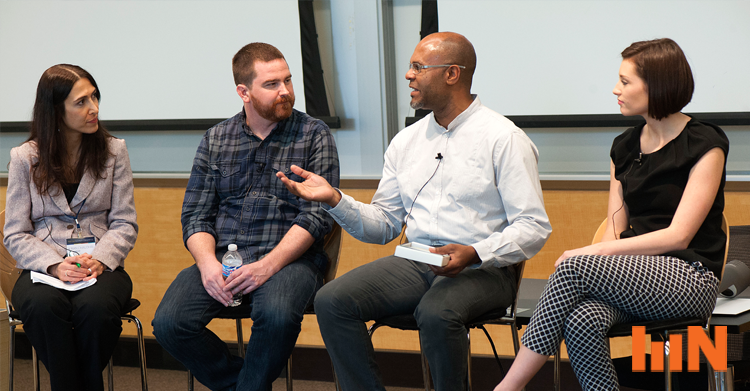The Positive Business Project put on their 2nd annual summit last month, gathering organizations to show off their culture, and we’ve learned quite a bit from our fellow finalists. Below are 9 things to learn from the Positive Business Project winners!
-
Find a Recognition Platform
Getting things done is what work is all about, but everyone loves a pat on the back. Team Detroit took this to the extreme and created a “Positive Incentives Committee,” charged with finding ways to motivate and congratulate team members. The committee led to the adoption of an online platform called YouEarnedit, where employees recognize each other through the app, and recognition can be redeemed for prizes like gift cards, charitable donations, and more points to recognize other coworkers!
-
Give back to build community
AE Works, based out of Pittsburgh, arranges extra-curriculars for their team, like food drives and low-income housing construction. These outings encourage team members from different departments and hierarchical levels to work together, making sure each individual knows they are relevant, as a person, and as a member of their team.
-
Accept team input and feedback
The City of Ballarat in Australia strives to produce better lives for its residents, and their first step to that is ensuring a good culture through in-depth culture surveys. It’s a somewhat more clinical approach—literally gauging and mapping the culture satisfaction of their team—but it gives them thorough, varied perspectives on culture, from the executive level, all the way down the line.
-
Drive collaboration with social media
Ford IT is a massive operation—over 11,000 employees internationally— they’ve tackled culture proportionate to their size is by leveraging social media campaigns and competitions to develop a cultural identity. Create a hashtag that uniquely yours, Ford used #PowerUp, and have your team share experiences with each other online.
-
Encouraging passion projects
Knewton, an adaptive learning company based out of New York City, taps into their education workforce for their culture by crowdsourcing passion and innovation. They regularly put on “hack days,” designating time specifically for employees to focus on their own passion projects, as well as “brown bag days,” for employees to teach a personal skill to rest of their team.
-
Culture hacking
General Motors likes to “hack” as well, but instead of focusing on passion projects, team members choose something they’d like to change about company culture, develop a prototype for that, and compete with others in a 24-hour period to pitch their idea, and potentially impact culture directly.
-
Rotating Shared Workspaces
Menlo Innovations, based out of Ann Arbor, Michigan, fosters camaraderie and innovation by pairing employees off into shared workspaces and rotating their partner every 5 days. (They’re also responsible for the book Joy Inc, which we recommend.)
-
Impromptu office events
Ozone House, a youth drop-in center also based out of Ann Arbor, has an internal “sunshine committee,” which regularly puts on impromptu office events—Diet Coke Day, Waffle Wednesday, Sundae Monday. Many food-related events, which are inexpensive and show staff appreciation in a fun and unique way.
-
Human-centric innovation stimulation
United Way, based in Detroit, takes a larger-scale approach by focusing more on the human side of things—empowering their employees and allowing organic solutions to manifest through fun, innovation, and imagination.They make sure everyone’s voice is heard before they make a major decision—from their internal staff members all the way down to the youth that they work with. Communication is encouraged, and when everyone’s voice is an important one, people become more engaged, and more insightful.
By now, you should be prepared to turn your office into a culture mecca! One easy step would be trying your hand at a recognition app like YouEarnedit or 7geese. It sounds scary, but just pick your favorite tip and try it—you’ll thank us later, and your team will too! The most important part is finding something that fits not just your current organization, but the organization you’d like it to be.

